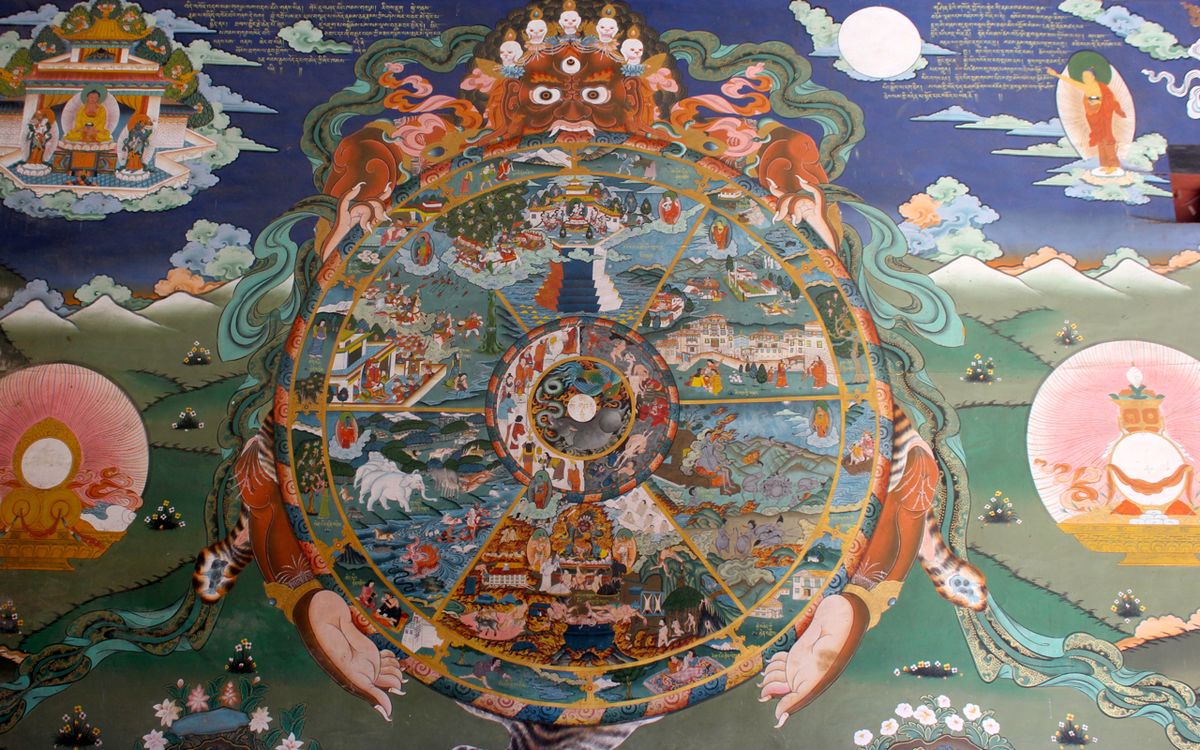
Understanding Samsara and Rebirth: The Wheel of Life
admin
- 0
littlecellist.com – The concept of the Wheel of Life, or Bhavachakra, is a central metaphor in Buddhist philosophy, illustrating the cycle of existence, known as samsara, and the process of rebirth. This article delves into the intricate symbolism of the Wheel of Life and explores the implications of samsara and rebirth on the spiritual journey.
The Symbolism of the Wheel of Life
The Wheel of Life is a complex mandala that depicts the entire cycle of existence. It is divided into six realms, each representing different states of consciousness and experience. The wheel itself is held by Yama, the Lord of Death, symbolizing the inescapable nature of impermanence and the cycle of birth, death, and rebirth.
The Six Realms of Existence
- The God Realm – Represents the state of existence where beings experience great pleasure but are also subject to the danger of complacency and ignorance.
- The Demi-God Realm – Characterized by constant conflict and jealousy, as the beings in this realm are always in competition with the gods.
- The Human Realm – The realm where beings have the potential for enlightenment due to the balance of suffering and happiness.
- The Animal Realm – Symbolizes ignorance and the instinctual struggle for survival.
- The Ghost Realm – Represents insatiable desires and the experience of constant hunger and thirst.
- The Hell Realms – The states of extreme suffering and torment, reflecting the results of negative karma.
Understanding Samsara
Samsara is the continuous cycle of birth, death, and rebirth that all sentient beings are trapped in. It is driven by karma, the law of cause and effect, and the three poisons of ignorance, desire, and aversion. These poisons keep beings bound to the cycle, perpetuating the wheel of life.
The Three Poisons
- Ignorance – The fundamental misunderstanding of the nature of reality, leading to the belief in a permanent, unchanging self.
- Desire – The craving for sensory pleasures, material possessions, and experiences, which binds us to the cycle of samsara.
- Aversion – The repulsion towards unpleasant experiences and the desire to avoid suffering, which also keeps us trapped in the cycle.
The Process of Rebirth
Rebirth in Buddhism is not the continuation of an unchanging soul but the continuation of a stream of consciousness. At the moment of death, the karma accumulated in one’s life determines the conditions of the next rebirth. This process is not governed by a divine being but by the impersonal law of karma.
The Role of Karma
Karma is not a system of reward and punishment but a natural law that determines the circumstances of our rebirth. Positive actions lead to fortunate rebirths, while negative actions lead to less fortunate ones. The ultimate goal is to accumulate positive karma, which can lead to a rebirth in a state conducive to spiritual practice and, ultimately, liberation from samsara.
Liberation from the Wheel of Life
The ultimate aim of Buddhist practice is to achieve enlightenment and liberation from the cycle of samsara. This is accomplished through the development of wisdom, ethical conduct, and mental discipline. By understanding the nature of reality and overcoming the three poisons, one can break free from the wheel of life and attain nirvana, a state of liberation and peace.
The Path to Enlightenment
The Noble Eightfold Path, which includes right understanding, right intention, right speech, right action, right livelihood, right effort, right mindfulness, and right concentration, serves as a guide for ethical and mental development. It is through this path that one can cultivate the qualities necessary to escape the cycle of rebirth and achieve enlightenment.
Conclusion
The Wheel of Life is a powerful symbol that encapsulates the Buddhist understanding of existence. By reflecting on the cycle of samsara and the process of rebirth, individuals can gain insight into the nature of suffering and the path to liberation. Understanding and contemplating the Wheel of Life can inspire a deeper commitment to spiritual practice and the pursuit of enlightenment, ultimately leading to freedom from the cycle of birth and death.


